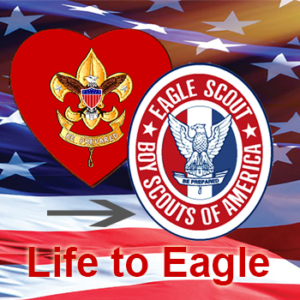Troop Advancement
Scouts BSA provides a series of surmountable obstacles and steps in overcoming them through the advancement method. The Scout plans their advancement and progresses at their own pace as they meets each challenge.
The Scout is rewarded for each achievement, which helps them gain self-confidence. The steps in the advancement system help a Scout grow in self-reliance and in the ability to help others.
For a complete, and up-to-date listing of all Scouts BSA advancements, visit the National BSA Site.
Introduction
Scouts BSA Advancement accommodates the three Aims of Scouting: citizenship, growth in moral strength and character, and mental and physical development. It is one of the eight Methods of Scouting.
There are six ranks:
- Tenderfoot
- Second Class
- First Class
- Star
- Life
- Eagle
When a Scout has achieved a rank, it represents that the young person has:
- Demonstrated living the Scout Oath and Law in their daily life
- Met the other requirements and/or earned the merit badges for the rank
- Participated in a Scoutmaster conference
- Satisfactorily appeared before a board of review
In the advanced ranks (Star, Life, Eagle), the Scout has to also:
- Served in a position of responsibility in the troop
- Performed service to others
Specific requirements for each rank, including alternate requirements for those with special needs, are available on the National Website.
